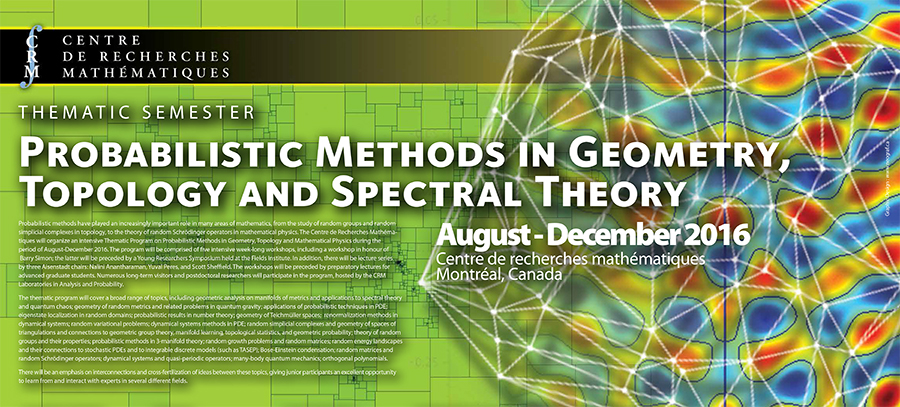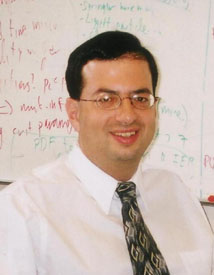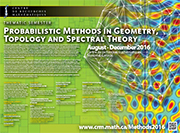Aisenstadt Chair
[ Français ]
Yuval Peres (Microsoft Research)
September 2 - 5, 2016
Lecture 1 - Friday, September 2, 2016 - 5:00 pm - Room 6214
From Laplacian growth to competitive erosion [ video ]
Laplacian growth is the study of interfaces that move in proportion to harmonic measure. Physically, it arises in fluid flow and electrical problems involving a moving boundary. We survey progress over the last decade on discrete models of (internal) Laplacian growth, including the abelian sandpile, internal DLA (first analyzed by Lawler, Bramson and Griffeath in 1992), rotor aggregation, and the scaling limits of these models on the lattice as the mesh size goes to zero. (My own work on the subject has been joint with Lionel Levine.) Most growth models can induce a model of competing growth; for internal DLA, this leads to competitive erosion (introduced by Jim Propp), the subject of the second lecture.
A reception will follow at the Salon Maurice-L'Abbé, Pavillon André-Aisenstadt (room 6245).
Lecture 2 - Saturday, September 3, 2016 - 3:30 pm - Room 6214
Competitive erosion is conformally invariant [ video ]
Suppose that each vertex of the graph is occupied by a particle, which can be either red or blue. New red and blue particles are emitted alternately from their respective sources and perform random walk. On encountering a particle of the opposite color they remove it and occupy its position. We establish conformal invariance of competitive erosion on discretizations of smooth, simply connected planar domains. This is done by showing that at stationarity, with high probability the blue and the red regions are separated by an orthogonal circular arc on the disc and more generally by a hyperbolic geodesic. (Joint work with Shirshendu Ganguly, available at http://arxiv.org/abs/1503.06989.) At the end of the talk, I will introduce the tools needed for the third lecture: Dynamical Percolation, Markov Type, and Evolving sets.
Lecture 3 - Monday, September 5, 2016 - 10:00 - Room 6214
Random walks on Dynamical Percolation [ video ]
We study the behavior of random walk on dynamical percolation. In this model, the edges of a graph $G$ are either open or closed and refresh their status at rate $\mu$, while at the same time a random walker moves on $G$ at rate 1, but only along edges which are open.On the $d$-dimensional torus with side length $n$, when the bond parameter is subcritical, we determined (with A. Stauffer and J. Steif) the mixing times for both the full system and the random walker. The supercritical case is harder, but can be analyzed using evolving sets (joint work with P. Sousi and J. Steif).


